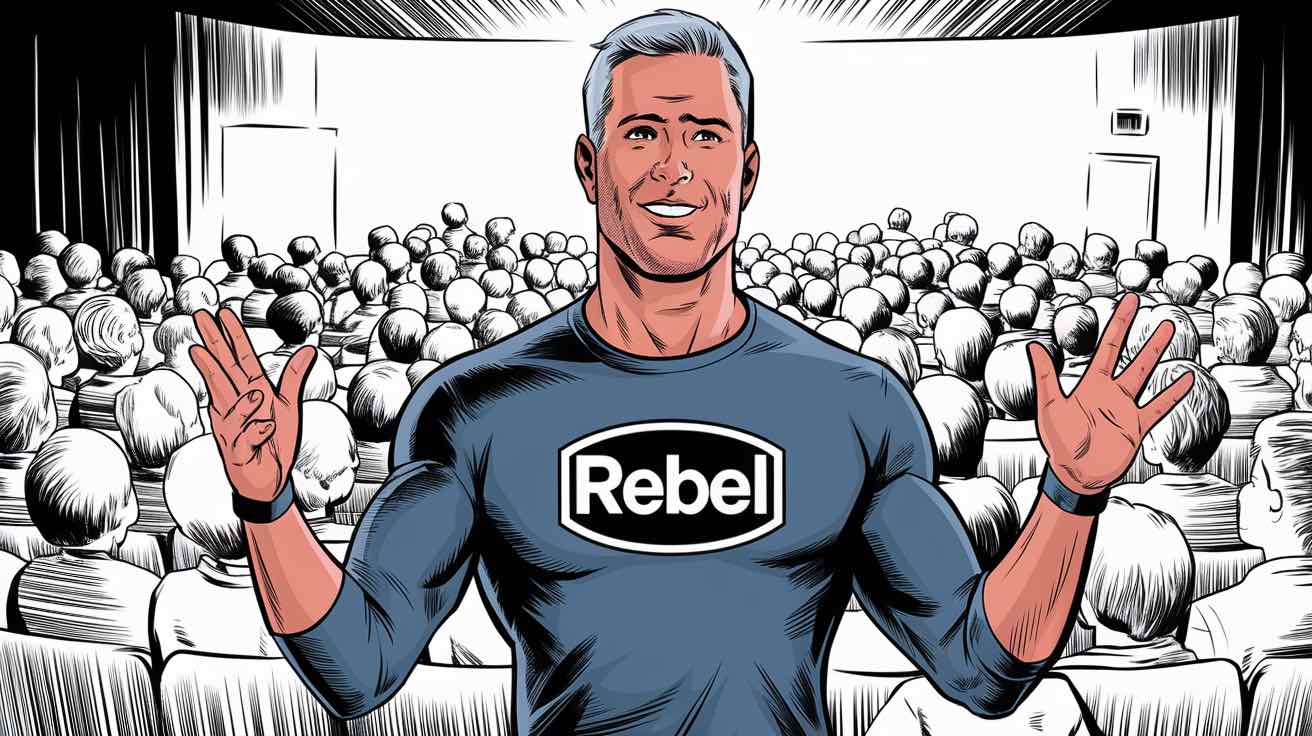How to deliver a presentation which feels like a fantastic conversation with a friend: 7 Storytelling Techniques for Engaging Presentations
Let’s face it—most presentations are dull. I know I’ve sat through enough PowerPoint death marches, where the presenter may as well have sent round a memo & saved us all the pain of having to sit & listen.
So if you want your presentations to actually mean something, you’ve got to go beyond dry facts and bring in the human element with your storytelling.
Humans are built for stories— it’s how we connect and relate to each other. It’s how we re-live experiences & share knowledge that sticks. And if it’s really good, we feel compelled to retell the story, to pass it on.
So in this article I’m giving you a step-by-step approach based on my over 2 decades of delivering presentations designed to move audiences from “who the hell are you?” to running to the back table, with credit card in hand.
7 storytelling insights I’ve uncovered that will transform your talks from forgettable to unforgettable. You’ll learn how to structure stories that are compelling.
Be the kind of presenter people look forward to listening to.
The Power of Effective Storytelling in the Boardroom
Remember the last time a presentation had you hooked from start to finish? I’ll bet you it wasn’t because the speaker was droning on with bullet points. I bet they were telling a story—a story that grabbed you by the gut and wouldn’t let go. That’s the power of storytelling. It’s what makes people sit up, pay attention, and actually remember what you said long after you’ve left the room.
Why Tell Stories in Your Presentations
- Engagement: Stories light up multiple areas of the brain, keeping your audience awake, interested, and hanging on every word.
- Memorability: People remember stories 22 times better than boring old facts. Don’t believe me? That’s straight from cognitive psychologist Jerome Bruner.
- Emotional Connection: Stories hit people in the feels—they trigger empathy and make your message resonate at a deeper level.
- Simplification: Got a complex idea? Frame it in a story. Suddenly, what seemed impossible to understand becomes crystal clear.
- Persuasion: Stories don’t just inform—they persuade. When you wrap your message in a story, you influence how people think, feel, and act without them even realising it.
7 Storytelling Techniques to Elevate Your Presentations
1. Start with a Bang: The Hook
Forget starting with “Today we’ll discuss…” That’s the fastest way to lose your audience before you’ve even started. Instead, dive right into the action:
“Picture this: You’re standing on stage, palms sweaty, staring at a sea of faces. In the next 60 seconds, you’re either going to captivate them or lose them for good. What do you do?”
2. Know Your Hero: The Audience
Every killer story needs a hero. And guess what? In your presentation, that’s your audience. So, ask yourself:
- What challenges are they battling?
- What keeps them up at night, and what are they hoping for?
- How does your message flip their world for the better?
Make them the hero of the story you’re about to tell. Craft your narrative so it’s about their journey and how you’re guiding them to victory.
3. Create Conflict: The Problem
Your storytelling skills rest on highlighting the real problem.
No story hooks your audience without tension. You need to nail the central conflict your audience is up against:
- A market shake-up that’s threatening to flip their industry upside down
- A broken process draining efficiency and wasting time
- A missed opportunity bleeding millions they didn’t even know they were losing
Paint the picture. Make them feel the stakes, and watch them hang on your every word.
4. Be the Guide: Your Expertise
You need to remember, you’re not the hero in this story—your audience are. You’re the guide, the one with the solution that bridges the gap between where your audience is now and where they want to be. Your experience, research, or product is the bridge that takes them from the problem to the victory they’re chasing. Try the Bridge Technique:
“Right now, Company X was losing $1 million a year to inefficiencies. With our solution, they’ve crossed the gap and are now industry leaders with 30% year-over-year growth.”
If you make you the hero, then you’re just bragging. And those are the least compelling stories. No one wants to hear them especially in the context of public speaking.
5. Visualize Victory: The Promised Land
What’s their dream scenario? Paint a clear picture of what success looks like for your audience. Get them to feel it:
“Picture this: You walk into the office on Monday, and every team member is in sync. Productivity’s through the roof, and you’re not just keeping up—you’re months ahead of your competition. That’s the power of [Your Solution or Your Idea] working its magic.”
6. Plot the Journey: Clear Steps
Break down the path to success into manageable steps. Use the “Rule of 3” for easy recall: If you’ve ever watched “Dora the Explorer” with your kids when they were really young, you’ll know Dora’s Map always gives her 3 steps.
3 steps is easy to remember and understand. Complex to simple is a sign of high level communication skills.
Which is why I suggest you stick to it when you’re writing the solution structure part of your story.
What are the 3 main steps your audience needs to follow to achieve their desired future?
For each step tell a personal story to highlight it.
It could be a “Discovery” story of how you realised why this step was critical.
Or a “Impact” story of using the step and the impact it made on you.
7. Call to Adventure: The CTA
Don’t leave them hanging. Give your audience a crystal-clear, actionable step to take right now:
“Here’s the deal: You can keep spinning your wheels with outdated methods, or you can take the first step toward real transformation today. Book your free consultation in the next 48 hours, and let’s write your success story together.”
Obviously, this is more of a “sales” call to action, but it can be what ever you need it to be.
Decide in advance. “What action do I want my audience to take as a result of my presentation?”
A comedian may say they want their audience to laugh.
A military leader might say they want their soldiers to march.
When i was a pitch speaker, I wanted my audience to make a decision. Buy or don’t buy. Just decide.
This is a critical step in any storytelling training. Or it should be.
Q: How long should my story be?
A: Keep it concise. Aim for 2-3 minutes for an anecdote or up to 5 minutes for a central narrative. The key is relevance – every element should reinforce your main message.
Q: What if I’m presenting dry, technical information?
A: Even complex data can be framed within a story. Use analogies, case studies, or “day in the life” scenarios to give context to your facts and figures.
Q: How can I practice storytelling?
A: Start small. Incorporate brief anecdotes into your daily conversations. Join a local Toastmasters club or take an improv class to boost your narrative skills in a supportive environment.
Conclusion: Any presentation skills training course needs to be structured around story telling for real engagement
Let’s be real—presentations packed with dry facts are forgettable. But a well-told story? That’s what sticks. When you bring storytelling into your presentation, you’re not just delivering information—you’re creating an experience your audience will feel and remember long after you leave the room.
Think about it: You’ve got the power to take your listeners on a journey, to make them see themselves as the hero of the story. And once you do that? They’re hooked.
Next time you step up to present, don’t just share slides—share stories. Turn that data into something alive, relatable, and unforgettable.
Your audience is waiting for a story that moves them, inspires them, and keeps them coming back for more. Make sure you’re the one to tell it.
Developing your storytelling abilities is worth the effort.

